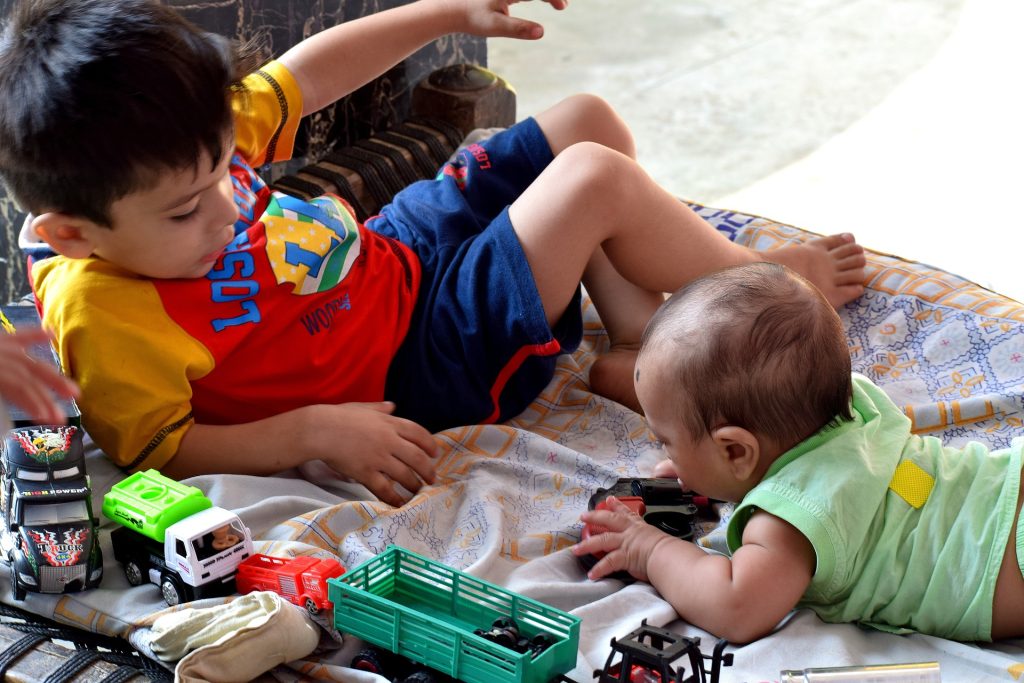Introduction
In a digital world that is changing quickly, technology plays a bigger part in our kids’ lives than it has in the past. It is our responsibility as parents and guardians to carefully and intentionally navigate this territory in order to make sure that media exposure for kids is enriching rather than harmful. Come along as we take you through the fundamentals of empowering digital literacy in kids and look at how to balance the real and virtual worlds to promote wholesome growth.
1. The Digital Canvas
A complete comprehension of the digital canvas is necessary before you and your youngster embark on this digital voyage. The options are endless, ranging from instructional games to interactive apps. This chapter clarifies the variety of media choices that are accessible while highlighting the significance of material that is age-appropriate and its impact on cognitive development.
How to Get Amid the Digital Maze
There are a plethora of engaging apps and instructional activities available on the internet that are age-appropriate. It takes a sharp eye to navigate this labyrinth of choices and choose content that corresponds with your child’s developmental level. We’ll look at how selecting the appropriate media can help you learn, pique your curiosity, and improve your cognitive abilities.
The Effects of Age-Related Content on Development
Children’s knowledge and involvement skills vary depending on the stage of their development. We’ll explore the importance of adjusting media content to correspond with these developmental benchmarks, guaranteeing that the digital experiences provided are not only pleasurable but also significantly enhance the development of cognitive capacities, linguistic proficiency, and social cognition.
https://www.idealupbringing.com
Unlocking the Capability to Learn
Digital media is more than just pleasure; it’s a platform for education. Learn how to spark a child’s curiosity with well-chosen apps and games and help them develop a lifelong love of learning. We’ll examine the mutually beneficial link between technology and education, emphasizing the revolutionary power of developmentally appropriate digital information in molding the cognitive capacities of the next generation.
2. Empowering Digital Literacy in Kids

The secret to releasing the enormous potential of the digital world is digital literacy. This section explores methods for helping kids develop digital literacy so they can securely surf the internet. Learn why it’s so important to teach media literacy, critical thinking, and responsible digital citizenship.
Developing Critical Thinking
The foundation of strong digital literacy is critical thinking. We’ll look at methods that help kids challenge, dissect, and assess material they come across online. We give students the skills they need to appropriately navigate the immense sea of digital content by helping them develop the habit of discernment.
The Significance of Media Knowledge
It is a skill that is applicable outside of the digital sphere to comprehend media messages. This section explains media literacy and how it affects a child’s capacity to comprehend and evaluate information from a variety of sources. We’ll look at interactive techniques to help children become more media literate so they can tell the difference between reliable and false information.
Handling the Moral Requirements of Digital Citizenship
Using the internet responsibly is an essential part of being an online person. We’ll talk about the moral issues that arise in digital relationships, stressing the value of responsibility, empathy, and respect. Our goal is to inculcate values in children through real-world scenarios that help them make moral decisions when interacting with technology.
3. The Influence of Parental Participation

Parents are an important influence on how their children perceive media because they are their main role models. This section examines the value of parents’ active involvement and provides helpful advice on how to set limits, encourage candid communication, and create a media routine that is healthy.
The Guardian’s Advice: A Crucial Function
Parents are a child’s first teachers and biggest supporters; thus, they are extremely important in helping them navigate their digital world. This section breaks down the layers of parental advice and talks about how important it is to stay involved in both your child’s online and offline lives. We’ll look at how this involvement supports a child’s general wellbeing and helps to establish trust and strengthen ties.
Establishing Boundaries with Intent
Setting limits with a purpose is essential to effective guidance. We’ll talk about how to set age-appropriate screen time limits, define acceptable content, and create a secure online environment. Parents who know how to strike a balance between supervision and autonomy can help kids use technology in a responsible manner.
The Skill of Honest Communication
The foundation of a positive parent-child connection is open communication. We’ll go into how important it is to create an atmosphere where kids feel at ease talking about their digital experiences, worries, and inquiries. Discover conversation-starting, effective communication techniques that help parents keep informed and mentor their kids through the complexities of the digital world.
4. Striking a Balance: Real Time vs. Screen Time
It can be difficult to strike a balance between screen time and in-person interactions. This chapter offers advice on how to establish realistic screen time limits, designate areas free of technology, and support activities that enhance mental, social, and physical health.

Creating Considerate Screen Time Boundaries
Setting sensible screen time limitations is essential to navigating the digital terrain effectively. We explore evidence-based recommendations that take the child’s developmental stage into account and prioritize screen time quality over quantity. Parents can set boundaries that encourage healthy participation by being aware of the dynamic interaction between technology and developmental requirements.
Establishing Tech-Free Zones
Tech-free zones are vital havens that support in-the-moment interactions and activities. We examine the thoughtful arrangement of these safe spaces in the house, offering suggestions for creating an atmosphere in which kids can participate in activities that don’t use technology. Learn how these zones can significantly improve communication, creativity, and a healthy way of living.
Promoting Holistic Health and Wellness
Children thrive in a holistic environment that includes physical, social, and emotional aspects outside of the screen. We’ll talk about stimulating activities that encourage well-rounded growth, like creative pursuits and outdoor play. Parents can enhance their children’s general wellbeing by finding a balance between screen time and in-person interactions.
5. Encouraging Innovation in the Digital Era
When children are empowered with digital literacy, the digital landscape can serve as a creative canvas. Examine how to encourage your child’s creative tendencies with interactive applications, online collaboration tools, and digital storytelling. Learn how using digital tools may foster creative expression and original thought.
Interactive Apps: The Canvas of Creativity
Interactive applications provide a modern platform for promoting creativity. We go into the world of developmentally appropriate apps, examining how well-chosen digital content may spark a child’s creativity and curiosity. Learn how to choose apps that promote creativity, problem-solving, and discovery to create a digital environment that stimulates rather than inhibits innovation.
Creating Stories in the Digital World through Digital Storytelling

The digital age offers a new dimension to storytelling. Discover the craft of digital storytelling, which offers kids a platform to create and consume stories. We examine the methods and resources that enable kids to create digital stories, improving their imaginations, communication abilities, and comprehension of story structures.
Platforms for Collaboration: The Influence of Digital Cooperation
The digital era presents previously unheard-of chances for teamwork. Examine the advantages of cooperative online learning environments where kids can work together on creative projects. We talk about how digital cooperation fosters better teamwork, communication, and the growth of a global perspective while providing new platforms for artistic expression.
In conclusion
fostering today for tomorrow
As we mentor our kids through the always-changing digital environment, let’s make intention, interaction, and moderation our top priorities. Through comprehending the subtleties of media consumption, cultivating digital literacy, and engaging in both their virtual and real-world lives, we may mold a future in which technology advances, rather than impedes, our kids’ overall growth. Making thoughtful decisions today will foster tomorrow.

